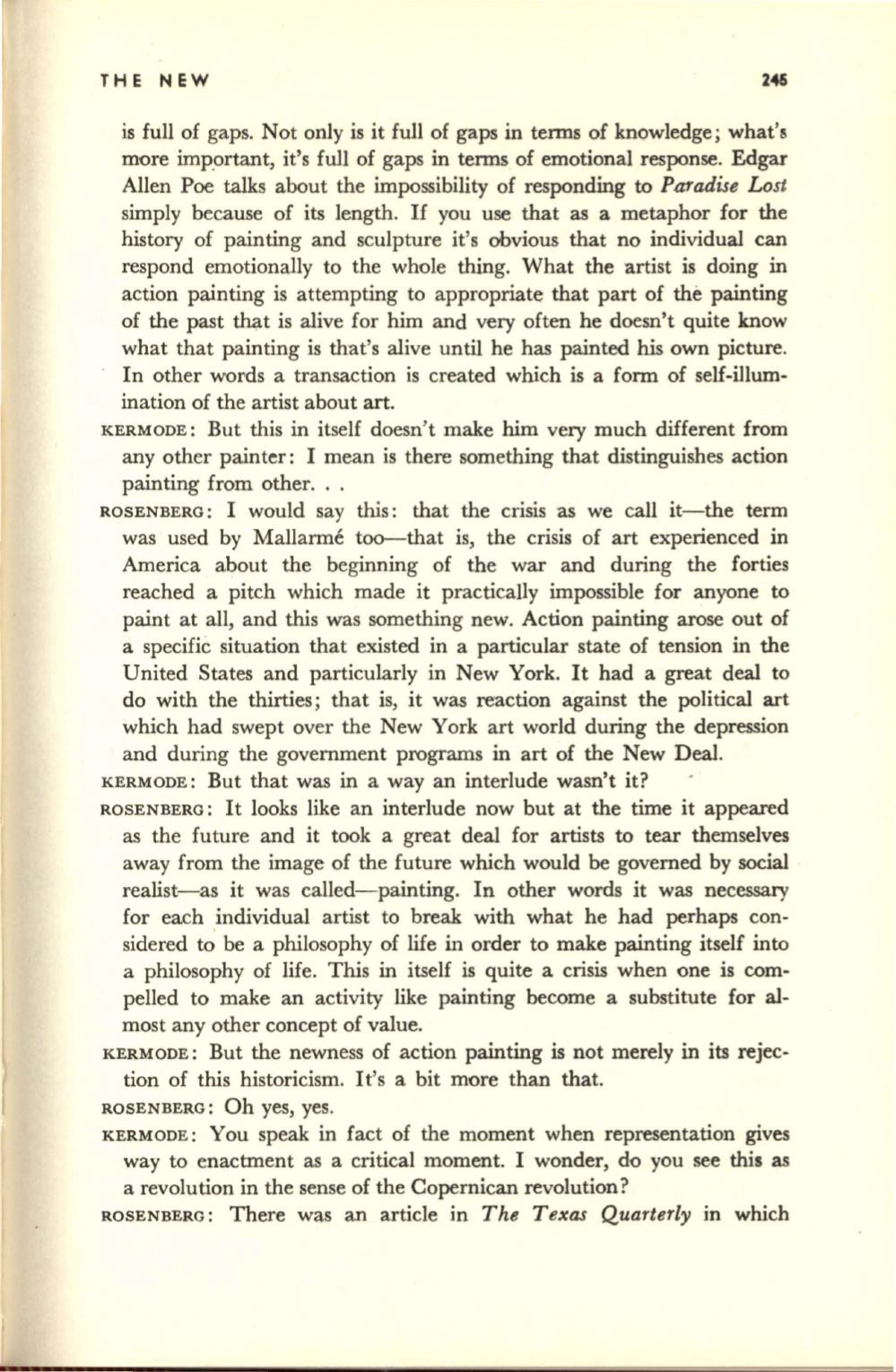
THE
NEW
245
is full of gaps. Not only is it full of gaps in tenns of knowledge; what's
more important, it's full of gaps in tenns of emotional response. Edgar
Allen Poe talks about the impossibility of responding
to
Paradise Lost
simply because of its length.
If
you use that as a metaphor for the
history of painting and sculpture it's obvious that no individual can
respond emotionally to the whole thing. What the artist is doing in
action painting is attempting to appropriate that part of the painting
of the past that is alive for him and very often he doesn't quite know
what that painting is that's alive until he has painted his own picture.
In other words a transaction is created which is a fonn of self-illum–
ination of the artist about
art.
KERMODE:
But this in itself doesn't make
him
very much different from
any other painter: I mean is there something that distinguishes action
painting from other...
ROSENBERG:
I would say this: that the crisis as we call it-the term
was used by Mallanne too-that is, the crisis of art experienced in
America about the beginning of the war and during the forties
reached a pitch which made it practically impossible for anyone to
paint at all, and this was something new. Action painting arose out of
a specific situation that existed in a particular state of tension in the
United States and particularly in New York. It had a great deal to
do with the thirties; that is, it was reaction against the political art
which had swept over the New York art world during the depression
and during the government programs in art of the New Deal.
KERMODE:
But that was in a wayan interlude wasn't it?
ROSENBERG:
It looks like an interlude now but at the time it appeared
as the future and it took a great deal for artists to tear themselves
away from the image of the future which would be governed by social
realist-as it was called-painting. In other words it was necessary
for each individual artist to break with what he had perhaps con–
sidered
t~
be a philosophy of life in order to make painting itself into
a philosophy of life. This in itself is quite a crisis when one is com–
pelled to make an activity like painting become a substitute for al–
most any other concept of value.
KERMODE:
But the newness of action painting is not merely in its rejec–
tion of this historicism. It's a bit more than that.
ROSENBERG:
Oh yes, yes.
KERMODE:
You speak in fact of the moment when representation gives
way to enactment as a critical moment. I wonder, do you see this as
a revolution in the sense of the Copernican revolution?
ROSENBERG:
There was an article in
The Texas Quarterly
in which


